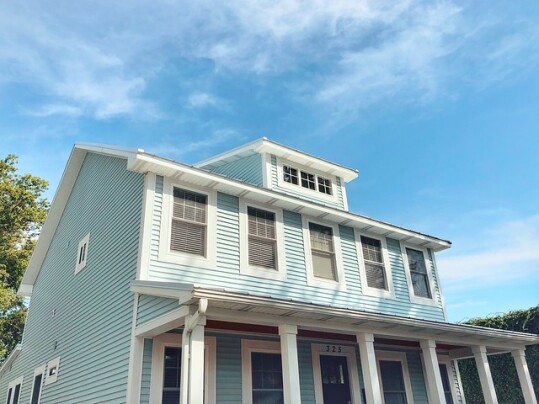The S&P Case-Shiller Home Price Indices is considered among the leading measures of U.S. home prices. Their data covers all nine census divisions and has been collected for nearly 30 years. According to their most recent release, home prices continue to increase but have begun to decelerate. In fact, both the 10-city and 20-city composite indexes showed a slower rate of increase in August than they did the month before. Still, S&P’s managing director and global head of index investment strategy, Craig Lazzara, says price growth remains strong. “The U.S. housing market showed continuing strength in August 2021,” Lazarra said. “Every one of our city and composite indices stands at its all-time high, and year-over-year price growth continues to be very strong, although moderating somewhat from last month’s levels.” The national index shows prices up nearly 20 percent from one year ago. Among individual cities, Phoenix experienced the biggest gains, with San Diego, Tampa Bay, Dallas, and Seattle rounding out the top five cities with the biggest increases. (source)
Archive for October 2021
Home Purchase Demand Rises As Rates Climb
According to the Mortgage Bankers Association’s Weekly Applications Survey, average mortgage rates increased last week from one week earlier. Rates were up for 30-year fixed-rate loans with both conforming and jumbo balances, loans backed by the Federal Housing Administration, and 15-year fixed-rate loans. The increases continued an upward trend that started last month. They also pushed rates to their highest level since February. But despite higher rates, home buyers remained active. In fact, demand for home-purchase loans rose 4 percent from one week earlier. Joel Kan, MBA’s associative vice president of economic and industry forecasting, says most of the home-buying activity is at the higher end of the market. “Purchase applications picked up slightly, and the average loan size rose to its highest level in three weeks, as growth in the higher price segments continues to dominate purchase activity,” Kan said. “Both new and existing-home sales last month were at their strongest pace since early 2021, but first-time home buyers are accounting for a declining share of activity.” The MBA’s survey has been conducted weekly since 1990 and covers 75 percent of all retail residential mortgage applications. (source)
New Home Sales Hit 6-Month High In September
In September, sales of newly built single-family homes increased 14 percent from the month before, according to new numbers from the U.S. Census Bureau and the Department of Housing and Urban Development. The improvement exceeded economists’ expectations and pushed sales to their highest level since March. But despite the gains, new home sales are still 17.6 percent lower than they were at the same time last year. Why? Well, affordability is a big part of the reason sales trail last year’s pace. For example, the median price of a new home has risen 18.7 percent over the past year. And the majority of new homes sold are in the $200,000 to $749,000 price range, with just 2 percent of September sales falling in the under-$200,000 price range. Still, sales increased in just about every region of the country, with the South, West, and Northeast all seeing improvements. The Midwest was the only region that didn’t see an increase in September. (source)
Report Tracks Which Markets Face Pandemic Risks
The housing market has remained remarkably strong throughout the coronavirus pandemic. But while it rebounded quickly and has stayed hot since, the market still faces pandemic-related risks. That’s why ATTOM Data Solutions releases a report each quarter, tracking the pandemic’s effects and which markets are most threatened. Todd Teta, ATTOM’s chief product officer, says the risks aren’t immediate but are still worth watching. “It’s important to stress that this doesn’t mean that any one area faces imminent danger, especially given how well the housing market has avoided major problems during the pandemic,” Teta said. “Rather, some are more at risk than others.” Teta cites home prices, affordability, and the number of distressed properties as a few of the biggest vulnerabilities. And, according to the report, the most at-risk markets were found in the New York, Chicago, and Philadelphia metro areas, as well as in the state of Delaware. Among the least at-risk counties, Oregon led the list with six, with Texas close behind with five counties. Other metro areas that were counted among the least vulnerable included Denver, Kansas City, Minneapolis, Richmond, Nashville, Phoenix, and Charlotte. (source)
Bidding Wars Fall To Lowest Level All Year
A competitive housing market can be difficult for home buyers. Not only do they have to prepare for the possibility of a bidding war, they also have to be prepared to lose one. The stress and potential for disappointment is almost enough to make home shoppers feel like giving up. Fortunately, newly released numbers show relief may be on the way for buyers concerned that a bidding war may blow up their budget. According to the data, the number of buyers in September who faced competition fell to the lowest level all year. In fact, 58.9 percent of home offers saw competition during the month. That’s down from 60.8 percent in August and 74.3 percent in April. And while that’s still high, there’s clearly a trend downward. Bidding wars have now fallen for five straight months and are currently right about where they were one year ago at the same time. But while the market is slowing down, buyers still need to be prepared. Inventory is low and the homes that are available are selling faster than they typically do at this time of year. (source)
Inventory Gains Help Boost September Sales
Sales of previously owned homes spiked 7 percent in September, according to new numbers from the National Association of Realtors. The month-over-month improvement included gains in every region of the country and reversed August’s 2 percent decline. Lawrence Yun, NAR’s chief economist, said the sales rebound was likely helped by the fact that there are more homes available for sale. “Some improvement in supply during prior months helped nudge up sales in September,” Yun said. “Housing demand remains strong as buyers likely want to secure a home before mortgage rates increase even further next year.” But while inventory has improved in recent months, the number of homes available for sale actually fell slightly in September, dropping 0.8 percent from the previous month. At the current sales pace, there is now a 2.4-month supply of available homes. A 6-month supply is considered a healthy housing market. Also in the report, 86 percent of homes sold in September were on the market less than a month. The typical property was on the market just 17 days. (source)
Mortgage Rates Increase Again
According to the Mortgage Bankers Association’s Weekly Applications Survey, average mortgage rates increased again last week, moving higher for 30-year fixed-rate loans with both conforming and jumbo balances. Rates for 15-year fixed-rate loans also increased, while the average rate for loans backed by the Federal Housing Administration fell from the week before. With rates rising, demand for mortgage loan applications decreased 6.3 percent week over week. Joel Kan, MBA’s associate vice president of economic and industry forecasting, says rate increases aren’t wholly to blame for the decline in demand. “Purchase activity declined and was 12 percent lower than a year ago, within the annual comparison range that it has been over the past six weeks,” Kan said. “Insufficient housing supply and elevated home-price growth continue to limit options for would-be buyers.” The MBA’s weekly survey has been conducted since 1990 and covers 75 percent of all retail residential mortgage applications. (source)







